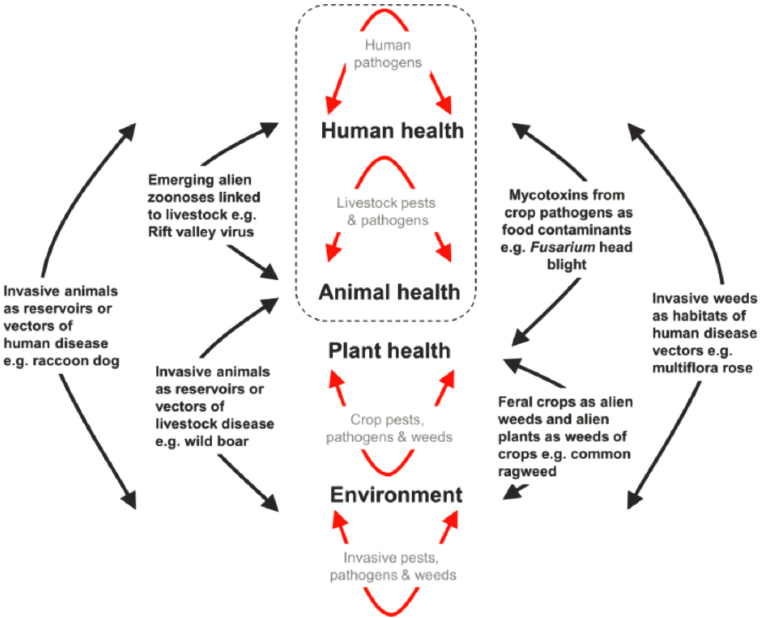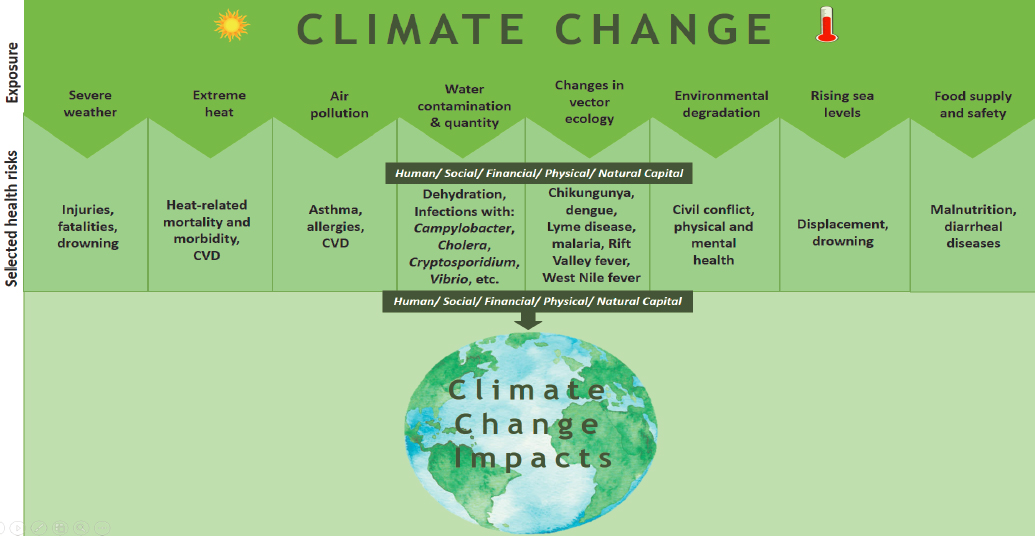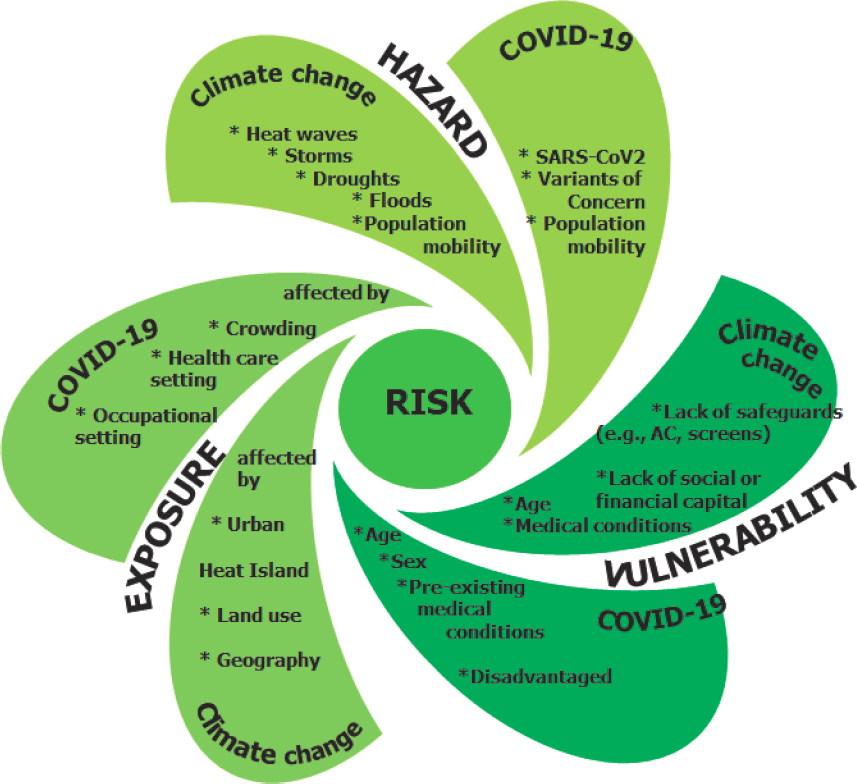10
Approaches to Developing Solutions to Improve Integration of Public Health and Nature and Inform Policy and Practice
TRANSDISCIPLINARY COMMUNITY-ENGAGED ENVIRONMENT AND HEALTH RESEARCH IN LOW- AND MIDDLE-INCOME COUNTRIES
Presented by Joshua Rosenthal, National Institutes of Health Fogarty International Center
Why should researchers engage with local communities? Engaging communities in research, Rosenthal said, is an evolving modality for mainstream investigators in public health and biomedical research, and the answers to that question range from “my funders want me to,” to the aspirational “it is
___________________
1 This list is the rapporteurs’ summary of the main points made by individual speakers (noted in parentheses), and the statements have not been endorsed or verified by the National Academies of Sciences, Engineering, and Medicine.
the right thing to do,” to the more concrete “I want to improve the quality of my research.” Other potential answers include the following: “I want to identify local priorities so that my questions are relevant and potentially actionable,” “I want to motivate communities and policy makers to increase the likelihood of implementing and maintaining a solution over time,” and “I want to understand the behavior of citizens with their environment and health.”
Community engagement in public health research can range from little participation to significant engagement. Prior informed consent with careful reporting back to the community falls at the low end of the participation scale, with participation increasing as the research moves from community-informed research to community-engaged research, to community-based participatory research, and on to community science (citizen or crowd-sourced science) enterprises. Community-informed research, for example, solicits input from the community to inform the research process while community-based participatory research includes both the priorities and participation of the community in the research process as a fundamental component of a project. Community science enterprise refers to science led by the community, with the scientists merely serving as advisors.
As an example of research requiring prior informed consent at the community scale, Rosenthal cited two biodiversity prospecting projects—one conducted in Peru in 1996, and the other conducted in Mexico in 2000 (Rosenthal, 2006). The Peru project involved a culturally naive investigator working in a conflict zone with a strong university partner, and the community had earlier superficial engagement in prior informed consent using a structure that an established representative Indigenous organization provided. The Mexico project was led by a U.S. investigator with extensive local knowledge, a decades-long history of interacting with groups in the communities of interest, and a strong university partner. There had been extensive community engagement in prior informed consent but no credible preexisting Indigenous organization, and the researchers relied on information from the government to organize their prior informed consent process. Because a credible Indigenous organization that could speak to the community participated, the Peru project succeeded, while the Mexico project, which Rosenthal thought was the better of the two (e.g., more rigorous design, deeper community ties, more potentially powerful policy outcomes), did not.
Another project Rosenthal discussed examined the health benefits of transitioning very low-income people in four low- and middle-income countries to using clean cooking fuels to reduce their exposure to fine particulate matter (Quinn et al., 2021; Williams et al., 2020). This trial involved four sites, and it used a single randomized controlled trial protocol adapted to each community. Before starting the project, the investigators went into the community to understand what kind of support the community would need to make this transition. In India, for example, a simple two-burner propane stove would suffice given it was a standard cooking implement in India. In the mountains of Guatemala, where the people cook with a large oven-type stove that burns large pieces of firewood, the researchers had to spend four times as much money to purchase a more deluxe stove with two burners and a griddle. Both types of stoves achieved the desired outcomes in their communities.
For a final example, Rosenthal discussed an ongoing large strategic initiative designed to expand the National Institutes of Health’s role in climate change and health research.2 The goal of this initiative is to develop transdisciplinary and transformative community-engaged participatory research projects in the United States, low- and middle-income countries, and perhaps Europe. The projects will focus on the most vulnerable communities and environmental justice communities to create research adapted to those communities that will answer their priority questions.
Rosenthal said that researchers who want to conduct community-engaged research should think early on about what they want or need from the engagement and if their intervention or plan can be co-
___________________
2 Additional information is available at www.nih.gov/climateandhealth (accessed November 25, 2022).
designed with the community. They could also consider who is appropriate and authorized to engage with them, what the community’s motivation to participate is, and whether the research team can follow through when the project gets going. In addition, investigators could ask themselves if the research team has the time, budget, and local expertise to conduct a successful study and how they will manage the community’s expectations for outcomes and follow-up.
INVASIVE ALIEN SPECIES AND PUBLIC-ECOSYSTEM HEALTH
Presented by Ana Cristina Cardoso, European Commission Joint Research Centre
Cardoso defined alien species as living organisms introduced by human activities to places outside their natural range. Some of these can become invasive alien species, which she said are one of five main drivers of change with large global negative impact on biodiversity. She noted that the European Alien Species Information Network3 (EASIN) has been funded and running since 2012, and since 2017 has been a key asset in a joint research center project on alien species monitoring to protect European nature.
Cardoso said that since the 1950s there has been an increasing number of human disease outbreaks related to emerging infectious zoonotic diseases from wildlife, several that can be directly or indirectly related to the introduction of an invasive alien species. Invasive alien species can serve as a source of a new pathogen or vectors of a pathogen. Cardoso added that invasive alien plant and animal species can have multiple effects across sectors.
Cardoso’s first example of an invasive alien species that can cause severe ecological, health, economic, and social damages is Acridotheres tristis, or the common myna. The common myna is native to central and southern Asia, and it was introduced to Europe deliberately to control insect pests and unintentionally by escaping from cages in the bird trade. Research has shown that the common myna is a threat to indigenous biota, especially on islands where they compete with small animals and birds for nesting locations. In addition, they are vectors of invasive plant spread, carry avian malaria, and pose a risk to human health by carrying ticks that transmit Lyme disease. Their droppings can also spread ornithosis (also known as psittacosis) and Salmonella.
The black fire ant, Solenopsis richteri, is another invasive alien species. This ant is native to South America and was introduced to Europe with imported potted plants and as stowaways via multiple modes of transportation. It is highly invasive and might have negative ecological effects resulting from their feeding habits and known aggressiveness. Their sting can cause allergic reactions in humans. The red-eared terrapin or slider, Trachemys scripta, was introduced from the eastern United States to Europe via the pet and food trade. This semiaquatic turtle is a popular pet in Europe because of its small size and low price, but when released into nature, it can outcompete native animals, including the endangered European pond turtle. The red-eared terrapin is also a potential vector for Salmonella, and large individuals can inflict painful bites.
Cardoso’s final example was Nyctereutes procyonoides, the raccoon dog, a native of southeastern Siberia introduced in Europe for recreational hunting and for its fur. Raccoon dogs can spread to new areas, negatively impact biodiversity through predation on native birds and frogs, and serve as an important vector for rabies and various parasites.
One Health is a holistic approach to bridging across sectors, said Cardoso. However, a recent review of One Health initiatives concluded that they do not explicitly address the core issues of
___________________
3 Additional information is available at https://alien.jrc.ec.europa.eu/easin (accessed March 31, 2023).

SOURCE: Hulme (2020).
biosecurity and the global proliferation of alien pests, weed, and pathogens that can cause significant threats to human well-being and public and environmental health (Hulme, 2020). The study’s author proposed a new concept, One Biosecurity (Figure 10-1), as essential for addressing the strong synergies across plant, animal, human, and environmental health and the urgent need for more integrated treatment of biosecurity threats (Hulme, 2021).
In Europe, invasive alien species are addressed through the European Invasive Alien Species Regulation, which concerns the prevention and management of the introduction and spread of invasive alien species, said Cardoso.4 Her organization, a directorate of the European Commission, developed EASIN to improve access to alien species data and information in Europe and to facilitate access to updated scientific information and spatial data in fresh water, marine, and terrestrial environments. EASIN also supports policy makers, researchers, managers, and stakeholders in their efforts to tackle invasive species, including supporting European Union member states to implement regulations on invasive species. In addition, EASIN serves as an early warning system for invasive alien species of concern to the European Union.
Aside from its goal in aiding regulators and policy makers, EASIN is increasing the general public’s awareness of, literacy about, and engagement with biodiversity and invasive alien species. It does this through a website that compiles community science projects and disseminates community science news and through social media. EASIN has also developed a smartphone app that the public can use to help monitor invasive alien species.5
___________________
4 Additional information is available at https://ec.europa.eu/environment/nature/invasivealien/index_en.htm (accessed March 31, 2023).
5 The smartphone app is available for iOS (https://apps.apple.com/it/app/invasive-alien-speciesin/id1117811993#?platform=iphone) and Android (https://play.google.com/store/apps/details?id=eu.europa.publications.mygeossias&hl=en) (accessed March 31, 2023).
As for how EASIN solutions are contributing now or might contribute to the One Biosecurity concept, Cardoso said they strengthen communication and exchange of data, experience, guidelines, and codes of conduct across different sectors’ activities. They also support coherence and coordination among policy sectors by associating species with the relevant policy sectors and with evidence of their impact. In addition, EASIN is planning to build on research outcomes to improve its species catalogs of information on pathways of introduction and transmission, and it will work on raising awareness and engagement of local community members in monitoring harmful organisms.
ADVANCING NATURE-BASED SOLUTIONS FOR URBAN RESILIENCE
Presented by Jan Semenza, University of Heidelberg
Semenza began by presenting an image of climate change that leads to exposures to public health and selected health outcomes (Figure 10-2; Semenza and Ebi, 2019). He then said he would frame his discussion using the Intergovernmental Panel on Climate Change’s risk framework, which puts risk at the nexus of hazard, vulnerability, and exposure (Semenza and Paz, 2021). In this context, hazards would be events such as extreme temperatures and heat waves and extreme rain events and flooding that can disproportionately affect vulnerable populations and marginalized groups that lack social capital. Exposures can arise from geography, hygiene, and wildlife, for example. “When we think about adaptation, we need to take this hazard-vulnerability-exposure nexus into account and try to tackle the solutions from this kind of a perspective in order to get a handle on the risk that climate change poses to public health,” said Semenza.
Semenza noted that this is a time of converging risks, and he pointed out that the COVID-19 pandemic and climate change share many similarities. For example, population mobility is a risk factor for infectious disease transmission resulting from climate change and for transmission of the SARSCoV-2 virus (Figure 10-3; Semenza, 2021).

SOURCE: Semenza and Ebi (2019) by permission of the International Society of Travel Medicine.

To illustrate how to find a pragmatic approach to tackle these types of challenges, Semenza discussed an urban social intervention designed to attenuate the negative consequences of climate change and climate variability and enhance community capacity and resilience. The intervention addressed deteriorating physical features in a Portland, Oregon, neighborhood (Semenza, 2003). Over a one-month period, Semenza and his collaborators engaged the community with long discussions about potential solutions to the urban blight affecting the community. After the permitting office rejected the co-designed plan, Semenza took the plan to the city council, which approved the project. The research team then implemented the plan alongside community members and the local homeless population. The result of creating a public gathering space and other activities (Box 10-1) was an increase in social capital that revitalized the community and expanded social networks among community residents, which stimulated a sense of well-being among residents.
The key to the process, said Semenza, was engaging the community and increasing community participation to create social capital among community members and increase bridging social capital between community members and government officials (Semenza et al., 2007). By the end of the project, the community had increased its capacity to solve problems in a way that drives social and collective action. “It was not just the nature-based solutions that were important but also the social engagement and social ecology we strive to improve,” said Semenza.
Traditional public health, said Semenza, offers vertical programs that are highly effective at solving individual problems such as smallpox or polio eradication.6 The limitation of this approach is that it does not address the underlying poverty or other contextual issues that could cause other illnesses. This is where lateral public health approaches come into play (Semenza, 2011). Lateral public health gets out of the public health silo and engages regulators, land use planners, sanitation governance, and individuals, along with the community, in collaborative decision making that results in building community resilience to climate change. Lateral health, said Semenza, strives to
- advance social networks within local communities to build bonding social capital;
- enhance bridging social capital by linking communities with partners unequal in power and access;
- increase community-based participation in decision making, preparedness, and response;
- take a holistic approach and intervene on all aspects of risk: hazard, exposure, and vulnerability;
- build interagency connections to overcome predefined jurisdictions; and
- transcend the siloed confines of traditional public health (Semenza, 2021).
Semenza said that the results of the Portland intervention vindicate the merits of public participation in urban design with direct benefits to public health. Social intervention, he noted, can create human-scale urban landscapes that benefit social capital and well-being, and urban interventions can increase community resilience to environmental stressors. His key message was that integrating public and ecosystem health systems can foster urban resilience.
___________________
6 Vertical programs in public health refer to interventions that target specific disease areas or health issues. See Msuya (2003) for a brief background and comparison with “horizontal programs.”
Q&A DISCUSSION
Moderated by Albert Ko, Yale University, and Benis Egoh, University of California, Irvine
Egoh asked Cardoso to discuss the role that community science plays in EASIN. She replied that local community members play an important role because invasive species can be found anywhere. EASIN, therefore, uses local community members as eyes in the field to augment the official national monitoring and surveillance systems that European countries have in place. Involving local community members also increases the public’s awareness about invasive alien species and why they should care about them.
Rosenthal said that community science is a powerful way to engage people to make change at local levels. Community science might make a difference at the national and international policy levels in conjunction with data generated by more rigorous types of structured, community-based participatory studies led by researchers who understand the data needed to make arguments at these levels.
When asked to explain why community engagement and participation are important, Semenza replied with an example from Nepal. In 2008, communities prepared for a massive flood. One community engaged effectively and participated in all the readiness activities, while a similar neighboring community did not engage and community outreach efforts failed completely. When a massive downpour occurred in 2014, the prepared community responded quickly to the alerts and community members moved to safety. In the neighboring community, thousands of people died (Semenza, 2021). This lateral approach to public health works, he said, and it is the right thing to do. “Public health should not be top-down,” he said. “It should be bottom-up. If you solve one issue and ignore everything else, you have not done anything. You need to take a more comprehensive approach, and that is what lateral public health is all about.”








